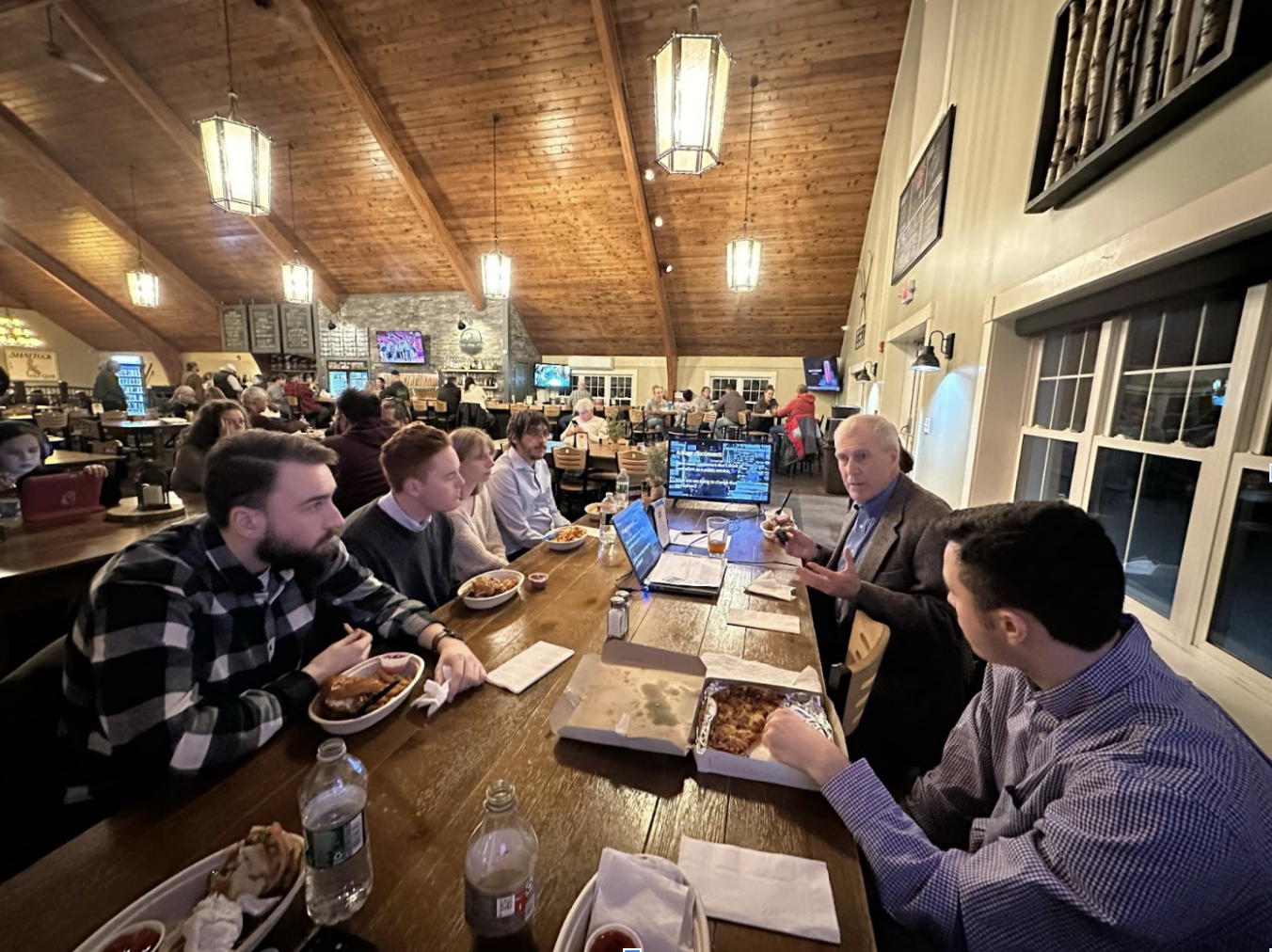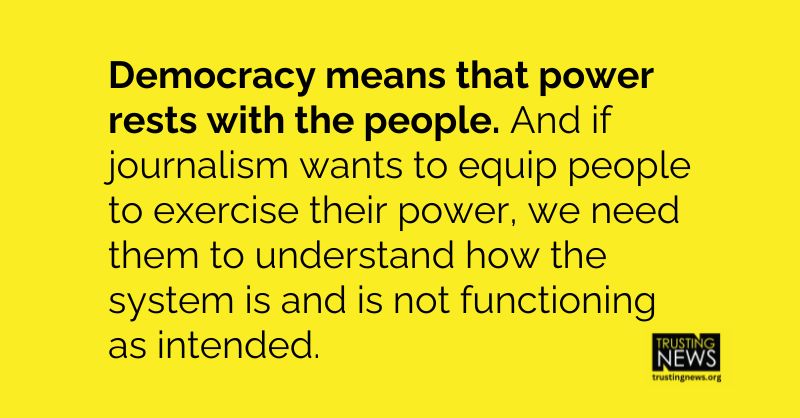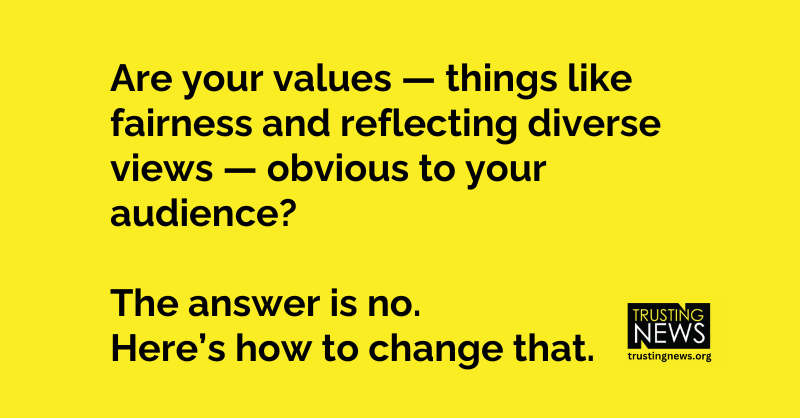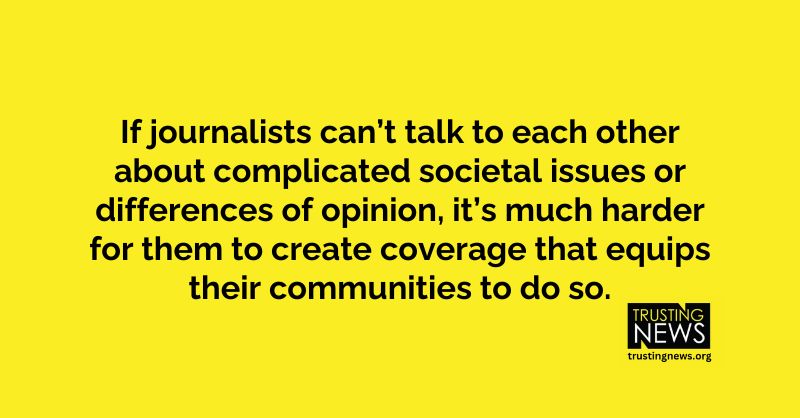
This weekly Trust Tips newsletter shares quick, actionable tips for how journalists can earn and sustain trust. Subscribe to get it in your inbox at trustingnews.org/newsletter.
Survey your staff about internal culture and trust
It’s probably fair to say that journalists value candor. We ask other people to tell us the truth, and we’re grateful when they don’t hold back. We value sources who stand up for what they think is right and are willing to say the hard thing.
But we often don’t practice what we preach. When it comes to newsroom culture and conversation, we don’t reward bold or dissenting opinions. We discourage — overtly or implicitly — people from challenging each other’s coverage or offering non-dominant perspectives.
If journalists can’t talk to each other about complicated societal issues or differences of opinion, it’s much harder for them to create coverage that equips their communities to do so.
If we can’t wade into and navigate tensions internally, our coverage is more likely to reflect false binaries and easy sound bites. If we can’t give each other the benefit of the doubt and see each other’s views generously, we’re more apt to produce stories with oversimplified heroes and villains.
This problem can manifest differently across newsroom roles. A culture of amiable agreement is often observed and adopted most by people with lower levels of authority or social capital. They learn that fitting in is appreciated and speaking up is risky. Even if they’re told to bring their whole selves to work, they observe quickly which parts are actually welcome.
Bosses also tell us they are aware of the risks of saying hard things and of making room for other people to speak up. It’s scary to facilitate a conversation among passionate people who disagree. And when leadership doesn’t model directness and disagreement, it sends a message that caution is valued most.
If that’s the case, what are we left with?
- A staff of burned-out journalists feeling undervalued
- A team that voices homogenous views and teaches people with non-dominant perspectives to stay quiet
- Coverage discussions that leave out diverse viewpoints
- Stories that do a great job reflecting people well-understood by dominant newsroom views but leave out or misrepresent the ones not heard on staff
How can you tell who feels comfortable speaking up in your newsroom?
If you’re willing and able to investigate these questions in your own newsroom, thank you. That shows a desire to invest in your team and improve your coverage. If you have feedback systems in place that allow you to learn about your team’s experiences — and you have built a culture of trust that allows them to speak candidly — congratulations! I’d love to hear about how you got there and learn from your leadership. (Seriously … email me!)
The challenge a lot of leaders have, though, is that your staff won’t want to talk to you about what’s wrong internally. If you’re the boss, it’s very hard to invite candid assessments and then be the one to read and understand the responses. The staff is much more likely to feel safe sharing their experience if they can stay anonymous.
NEED SUPPORT? We can help. We have a newsroom survey that will invite your entire team to answer questions about how well people communicate about challenging issues, and about whether there are specific communities or topics that the newsroom struggles to have honest conversations about. We can also analyze the responses across demographics like age, race/ethnicity, family background and length of time in the newsroom, helping you understand if there are problematic patterns. We’ll anonymize anything we share back with leadership to make sure answers can’t be traced back to individuals. And our team, including Eve Pearlman of Spaceship Media, will support you in developing strategies for how to act on what you learn. Read how we can help you deploy a newsroom survey on our Dimensions training page.
Our team sees the need for this routinely
We hear from journalists regularly who choose to keep their heads down rather than share their own lens on the world. It simply doesn’t feel worth it to share experiences rooted in things like their family’s religious or political views. They don’t want to risk having their ethnic or cultural perspectives disrespected or disregarded. They don’t feel safe enough to share their background — or even what they’re hearing in their own friend networks.
I recently talked to a journalist about a specific coverage area that they had a personal lens on. They shared some observations from their community, and I asked if they’d brought their concerns and story ideas up in the newsroom.
My notes from the conversation are full of statements like: I need to walk on eggshells. I don’t want to be a rabble-rouser. Stories have to be framed around the “right” ideology. I’ve pitched ideas like this before, but they don’t go anywhere. Sometimes colleagues talk about things like this in small groups, but never at the tables where decisions get made. We’re afraid to get shamed if we question a story.
We hear experiences like this from journalists of color, from journalists with strong faith traditions, from journalists who are immigrants and from journalists who are conservative. We also hear it brought up specifically around many of the most complicated issues journalists are covering these days.
Diversity of perspective is crucial for good journalism
In writing about innovation, Corey Ford describes an axis of standards and safety. Too often, when bosses signal to their teams they have high standards for their work, that correlates with a low tolerance for risk — for sharing imperfectly formed ideas or unpopular opinions. There’s the perception that encouraging candor involves lowering the standards. Throwing out challenging ideas is seen as disrespectful, disruptive, or at least inefficient.
Our communities depend on us, however, to reflect diverse views and experiences with nuance and accuracy. It’s much easier to do that if:
- We have diverse views on our team. (Our Dimensions of Difference hiring guide can help.)
- We create a culture that empowers our team members to speak their mind.
Check out our Dimensions of Difference training and survey options if you could use support tackling these issues.
IN CASE YOU MISSED IT: We wrote last week about how to make room in your routines for building connections and trust among staff members.
COMING UP NEXT: We’ll share ways to help your staff assess coverage of complex or polarizing topics.
At Trusting News, we learn how people decide what news to trust and turn that knowledge into actionable strategies for journalists. We train and empower journalists to take responsibility for demonstrating credibility and actively earning trust through transparency and engagement. Learn more about our work, vision and team. Subscribe to our Trust Tips newsletter. Follow us on Twitter, BlueSky and LinkedIn.
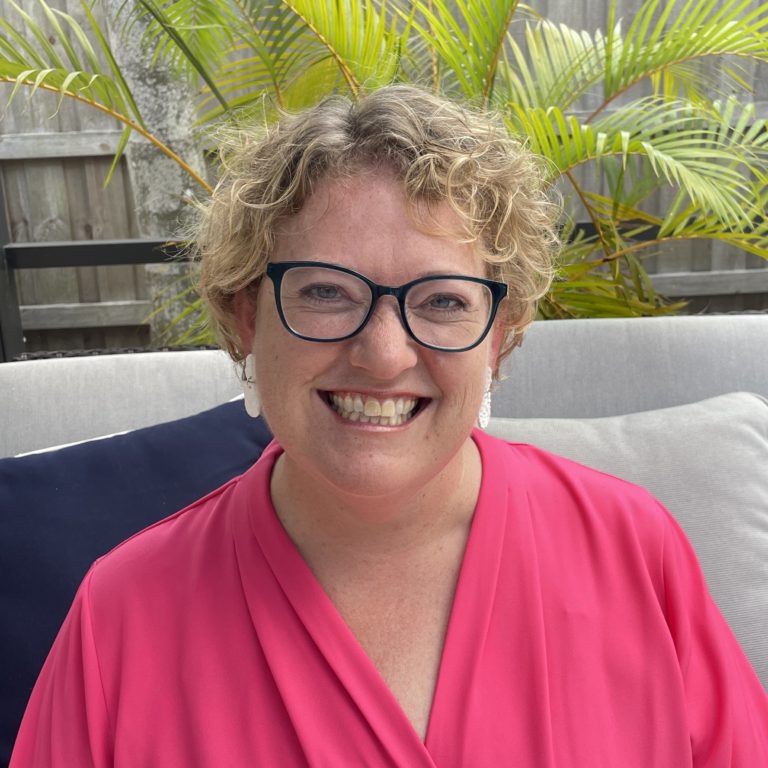
Executive Director Joy Mayer (she/her) founded Trusting News in 2016 after a 20-year career in newsrooms and teaching. She lives in Sarasota, Florida, and can be reached at joy@TrustingNews.org.
